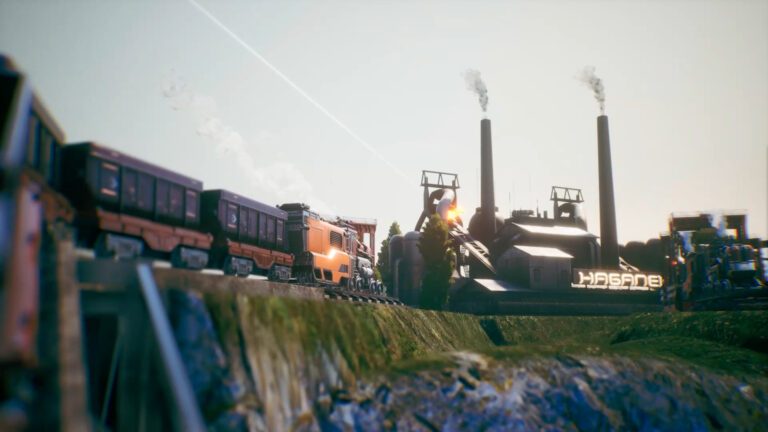Railgrade is the latest in a short line of train simulation games that put you in the seat of managing not only the train paths but the economies of running the train system, routes and resources. You’ve got to be profitable and, on many missions, do so within a certain time to get that S rank.
This guide is both for new players and to help you get S Rank on each stage. It takes a combination of the following tips to really shine in Railgrade.
Understanding the Game Mechanics
In Railgrade, exporting and delivering goods to a consumer yield the same money reward. You should always prioritize delivery over exporting, except in cases where you lack the funds to clear produced goods.
Cities have a storage limit for growth materials, but they will continuously accept all growth quantity. If their storage is full, they will pay only half the reward. This rule does not apply to catalysts or “deliver <X> to construction site” objectives.
Remember, higher tier cities require more of the lower-level resources per level, up to 5 of the first resource per population. There doesn’t appear to be an upper population limit.
Cities are not obstacles! You can freely put rails through them.
Production and Consumption Ratios
The production/consumption ratios shown on menus can sometimes be misleading due to the different working cycles of buildings. Most buildings operate on a 16-second clock, but some operate on 8, 32, or 64-second cycles. Not all buildings are even, so take careful note as you build your network.

Bonus Missions & Upgrades
If a bonus mission seems too demanding, simply progress through the campaign. You will unlock buildings, upgrades, and train engines that can be beneficial for earlier maps. For instance, the “alternating” (load balancing) rail switch and an upgrade that increases all your station loading speeds are unlocked in Mission 20.
Trains & Rails
Most train engines struggle with steep inclines. To mitigate this, stagger the incline (go up 1 level, go straight for a few blocks, then up another level). Rails are affordable, even those on supports. When in doubt, use more rail. It’ll make things so much better than just trying to draw straight up an incline.
Missions
Missions typically play in a linear fashion. Initially, you may lack the necessary workers or money to build a supply chain for the mission objective. When this happens, focus on growing the population of any available city by supplying the city with resources that your objective supply chain will need. Focus on your money and workers. Once you have enough workers, stop supplying the city and funnel all resources into objective factories.
High Volume Strategy
For managing high volumes, avoid re-using rails and having trains for different resources use the same rail. An ideal setup is either a single rail for a single train going back and forth, or a closed loop with multiple trains for the same resource. This approach makes it easier to control supply and demand as you can add trains or extend them without disrupting other operations.
Managing Stations and Resources
Each station block costs upkeep, which can add up quickly. Begin with 1 block stations and only increase if throughput demands it. Be mindful of your depot counts and trains. If you see partially filled trains, you’re not producing enough. If your buildings are full, you need more trains.
Efficiency in Production
Building new collectors (e.g., pumps, mines) is more efficient than upgrading. However, if you are limited on workers, it might still be prudent to upgrade expensive factories. The number of resources a producer covers does not affect production. The only requirement is that the building touches at least one resource.
Managing Workers and Cash
If you are constrained with workers but have cash, running multiple buildings with minimal personnel is more effective than even upgraded buildings with full staff. Catalysts can also help to get more production with few workers.
Train Engines and Wagons
For steep inclines, the Hill Climber engine is the best choice. Make it a 7 or 8 wagon train because this engine barely suffers from additional length. For almost all other purposes, the Boiler+4 wagons are the train of choice. Do not mix trains of different speeds on the same route/rail.
Dealing with Waste
If you find yourself choking on Waste and can’t build or use Incinerators, you can technically cheat: Build a boiler with max wagons, have it pick up the waste, sell the train. This will erase the waste problem permanently.
Energy Production
Depending on your choices, if given a choice between producing energy by Geothermals or Power Plants, go for the Power Plants. They produce PROFIT as well as energy.
Final Tips
Remember, the mission timer starts as you place your first train, so build everything else you can afford first. Monitor your depot counts and trains. If you see partially filled trains, you’re not producing enough. If your buildings are full, you need more trains. Likewise, if your trains stack up, you need more stations.
Hope that your journey through Railgrade is fun, exciting and full of train tracks and good times. If you’re tired of trains, look at giving a bus a drive.
If you’ve got an amazing tip, leave it below in the comments!






